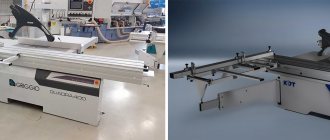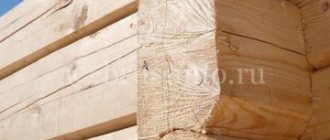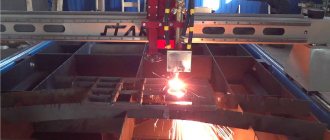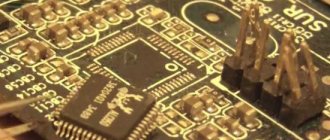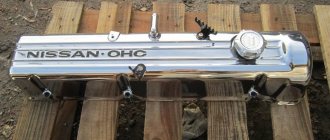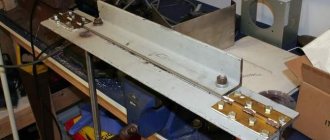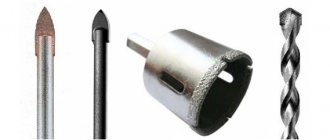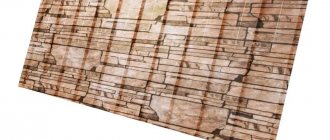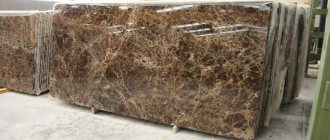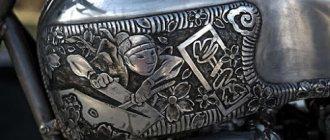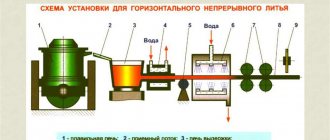The stamping press, which is used to forge metal blanks, operates according to a fairly simple scheme. The principle of its operation is essentially similar to the principle of operation of a conventional hammer, which is used to strike a metal product in order to deform it and give it the required configuration.
Mechanical presses type K2130 are used in cold sheet stamping areas
What equipment is desirable to have when organizing the production of furniture from chipboard
In this case, the set of machines must include the following types.
Format-cutting
This equipment is intended for cutting slab and sheet materials. These format circular saws (this is what, technically correctly, the mentioned machine is called). The device ensures that cuts are made in the required direction (transverse, longitudinal). It is equipped with cutting (main) and scoring (additional) discs, which allows you to get an even cut edge in one pass. Allows you to cut at the desired angle and obtain beveled edges.
There are similar products from different brands on the market. But all such products have approximately equal performance.
The difference in price is determined by the brand, the length of the permissible stroke of the carriage, the presence of additional devices and units, and the ability to tilt the cutting tool.
When purchasing, you must choose a model whose stroke length is at least 10 cm greater than the maximum dimensions of materials supplied for cutting.
Increased productivity and adjustment accuracy is achieved by equipping the longitudinal ruler and transverse ruler stops with electronic actual position indicators.
Band saw vertical
The main advantage is the ability to make curved elements and the small area required for installation (very important for small businesses).
If necessary, you can replace machines of the mentioned type with models with a vertical table designed for cutting.
Edge banding
They are offered by manufacturers in manual and automatic versions. Used for applying edges made of various materials to panels.
The designs differ in the tasks they solve. Edges can be applied to: end, curved and straight panels. Such equipment ensures the formation of an edge with a thickness of (0.4-5.0) mm and a width of ≤10 mm. average feed speed in automatic mode, 5 mm/sec.
They are in demand when processing natural (paper, veneer) and synthetic (ABS, PVC, melamine) materials.
Edge trimming is carried out after cutting the workpiece on a format-cutting machine.
The type of machine is selected taking into account the range of furniture produced.
Drilling
Each manufactured product is assembled from several elements. therefore, they have holes for installing fittings and fasteners. This can be done as accurately as possible using multi-spindle (from 2 to 23, in the vertical plane, from 2 to 35, in the horizontal) drilling and filler machines.
Most models allow corner drilling. The required accuracy is ensured by pneumatic clamps with which the workpiece is fixed on the table. You can drill blind, through holes.
Copy-milling
This device ensures precise execution of panels and grooves within the contour of the workpiece. Allows you to produce complex elements of decorative finishing of facades and make shaped details. They differ from a conventional milling machine by the presence of a cutter with which the probe is synchronized. This allows you to produce the required number of parts according to the specified size and shape.
Machines for making furniture from wood on favorable terms
All products come with a real guarantee.
If a manufacturing defect or breakdown is detected during normal operation (warranty case), the company will fix the problem free of charge with an on-site visit. In addition, we provide services for calibrating equipment, replacing consumables, sharpening tools, supplying original spare parts and post-warranty repairs of machines for making furniture at a price below market prices. “Machine Park” will easily deliver the equipment to the place of its installation, set up and start up the machine, and conduct a master class on the operator’s work. Looking at the pages of our catalog, it is easy to see that the company offers to buy machines for making furniture at the lowest prices. And these are not all the advantages of pricing within the framework of cooperation with Machine Park. Firstly, everyone has the right to request a personal discount, which depends on various factors, but always allows you to further reduce investment in woodworking equipment. The discount bonuses and promotions generously carried out by one of the largest dealers of furniture production machines are echoed. Another cornerstone of the benefits of purchasing machines from us is the ability to purchase on credit or enter into a leasing agreement with payment of the full cost in installments over a long period.
Call, ask your questions by email - we will always be happy to answer you and provide the best conditions for purchasing furniture making machines in Kazan!
What is required when making solid wood products?
In addition to the individual types of machines mentioned above (milling, format-cutting), products of other types will be required:
Jointing
Can be replaced by a complex installation with a simultaneous planing width of 400 mm.
Trimming
It simplifies cross-cutting and helps remove natural defects of natural wood before moving on to the stage of final cutting of a specific part.
Turning
Used for the manufacture of decorative finishing elements made of metal (custom fittings, supports, etc.).
Grinding
Sanding is a very important step for natural wood parts.
It is recommended to purchase a machine that can grind not only flat, but also relief structural elements.
The basis of any furniture production is a CNC milling machine
When organizing furniture production, various models of machines of this type are used:
- Tabletop (mini) – very convenient for use in rooms with limited space.
When equipped with a special rotary device, they allow 4D processing of workpieces. The disadvantage is the small size of the latter.
- Drilling and milling – these universal models allow you to perform complex processing of workpieces, including: threading, drilling, milling work, and reaming holes.
These machines are available in almost any furniture production. The main advantage of the equipment in question is that, with a relatively compact size, it allows you to perform many operations. Especially if you have CNC.
- Combined - similar machines are made on the basis of turning and milling machines, which are equipped with a three-axis unit and CNC. in fact, the equipment of the mentioned group can be classified as four-axis.
Hot Forging Equipment
If we compare the cold and hot forging methods, we can immediately say that the first method requires much more skill from the worker, the presence of some artistic skills and, of course, the ability to work with a set of necessary tools.
Hot Forging Equipment
Forging of the material occurs after it is preheated in a forge furnace. It's called a forge. The forge is equipped with equipment for forced air supply. Heating is carried out to a given temperature and then transferred to the anvil. This is a metal plate on which impact processing of a heated workpiece is carried out. It is performed using hammers and sledgehammers of different weights. One worker, with a light hammer, strikes the desired place, and the second, armed with a heavy hammer or sledgehammer, strikes a strong blow to the designated place. After the workpiece has cooled, it is again loaded into the oven for heating. All movements of the part during its processing are performed using pliers with long handles.
Hand hot forging
In addition to the above-mentioned basic tools, during hot forging, many special tools are used that allow cutting hot metal and forming complex surfaces during hot forging of metal.
Forge
To heat the workpieces, furnaces are used, which are called forges. Its design includes several components. In particular:
- barrel made of fire-resistant material;
- hearth, with built-in grate;
- air supply and exhaust systems;
- working window through which long workpieces are fed;
- a chimney through which combustion products are removed.
Gas forge forge
In addition, the forge also includes a quenching bath. The operation of a classic forge is based on the unique reducing ability of carbon. It is this ability that successfully resists the oxidation of the workpiece, that is, its combustion. The calorific value of carbon is also important here. The fact is that when supplying air, it is necessary to regulate its quantity. There should be enough of it to burn the carbon, and the heat generated will raise the temperature in the furnace even higher.
In addition, the air supply to the forge must be adjusted so that the supplied oxygen is not enough to oxidize the metal. But if the heated workpiece is kept in this state for more than the required time, then it will become oversaturated with carbon. There is such a term - overdrying, that is, the metal becomes very fragile. By the way, cast iron can be used as an overdried metal.
Muffle furnace
Equipment that is used to heat parts made of different materials to a given temperature is called a muffle furnace.
Muffle furnace
A distinctive feature of this equipment is the presence of a muffle. So, they call a part that protects the part from contact with fuel and combustion products and at the same time serves as a chamber in which the part is heated. In practice, two types of such furnaces are used, with a permanent and replaceable muffle. In the first furnace, the loaded parts undergo all operations - from heating to readiness, in the second, only until cooling. That is, as the required temperature and a certain holding time of the workpiece are reached, one muffle is removed and another is installed in its place.
It should be noted that both the forge and muffle furnaces can use different types of fuel - gas, coal, firewood, light and dark oil products, etc.
Anvil
One of the key tools used for both cold and hot forging of metals is the anvil. It is on its surface that blacksmiths deform the workpiece and bring it to a finished form. The anvil is heavy and therefore it is rigidly fixed to a wooden block.
Anvil - Key Tools
The structural anvil consists of:
- horns;
- platband with holes;
- bases with paws for installing an anvil.
For the manufacture of this tool, 45L steel is used. It should be noted that anvils are products manufactured in accordance with a number of GOSTs. For example, GOST 11396-75 normalizes hornless products weighing from 92 to 200 kg, and GOST 11398-75 defines the requirements for products with two horns and weighing from 100 to 270 kg.
The hardness of the material from which anvils are made is 340 - 477 HB.
3D milling machines
The models of this type of equipment we offer are almost completely automated.
Together with the installed CNC, this allows us to completely eliminate the negative influence of the “human factor”.
The machines of this group make it possible to produce three-dimensional elements of furniture structures of any type. The built-in computer analyzes the program, pattern depth, part configuration, and other parameters and strictly observes them during processing.
The design of such a machine, regardless of brand, includes the following basic elements.
- Milling cutter
The basic element responsible for cutting, engraving and cutting workpieces. It is a replaceable element (the machine kit includes a set of cutters for various purposes and configurations).
- Chuck
Fixes the cutting tool on the spindle. Most often, this is a collet that allows you to ensure the required position of the cutter on the spindle axis.
- Motors – to move the head along each of the axes, its own is used.
- Spindle
Provides transmission of rotational motion from the engine to the cutting tool, compensates for vibration during rotation and increases processing accuracy.
- Gearbox
Converts torque by increasing or decreasing the speed. It crushes the stroke, which ensures maximum precision in processing the workpiece.
- Toothed rack
Rails for moving the base processing unit in combination with a mechanical transmission that converts gear rotation into translational movement of the unit.
- Guide axes – specify movement along the Y and X axes.
- The control system is a built-in computer with the ability to change the loaded software.
- Cooling system – together with the lubrication system, increases the reliability and durability of the machine.
- Machine table
This is where the main work area is located. Most modern 3D machines are equipped with vacuum tables. The operation of the vacuum pump allows you to quickly remove dust and chips during the processing of the workpiece.
One of the most popular models in this group is the machine from the Wattsan model A1 1313 line. The Wattsan A1 1313 CNC milling and engraving machine is an economical and convenient device that cuts and engraves wood, MDF, chipboard, acrylic, plexiglass, PVC, composite, aluminum .
With a power of 2.2 kW, it is capable of high-quality processing of workpieces made of any materials (natural wood, glass, acrylic, etc.).
Has a welded frame and slatted table. The total weight reaches 600 kg. It is equipped with supports that dampen operating vibrations, a vacuum table, an aspiration system, inductive sensors, and other useful mechanisms.
Four-axis milling machines equipped with CNC
They differ from the models discussed above in the presence of an additional rotary axis, or with the implemented ability to move the spindle fixed to the portal along the Y axis.
The first option provides for the presence of a rotary axis, the design of which includes heads with a cylindrical tip and a clamping chuck connected to the motor (provides rotation of the workpiece). The headstocks are able to move in space, providing adjustment of the distances between structural elements.
The second involves placing the 4th axis directly on the spindle (it is the spindle that is deflected to process the workpiece at the required angles). Disadvantage: the angle is ≤90°.
For those who plan to seriously engage in furniture production, we recommend the M1 1325 RD model from the Wattsan line, which has unique performance characteristics:
- The dimensions of the workspace are 2500*1300, which will allow the production of furniture of any size;
- the two-phase motor has a long service life;
- the weight of the machine exceeds 1000 kg, which reliably compensates for any vibrations;
- the frame is made of a welded reinforced profile and will serve the owner for a long time in any operating mode;
- This model allows long-term continuous operation, thanks to the built-in water cooling system.
Where to buy equipment for furniture production
Reliable, high-quality equipment is offered by leading manufacturers and suppliers. Preference should be given to products from well-known companies. Employees of the supplier company will offer their equipment options to each client. After installation of all units and systems, it is necessary to carry out commissioning work.
Today you can buy machines for furniture production on leasing terms. For beginning entrepreneurs who do not have sufficient financial resources to purchase all types of machines and systems, this option is optimal.
A reliable machine tool supplier offers technical and maintenance services. High-quality equipment is used for a long time, periodically updated and modernized, because new units often appear on the market and innovative technologies are introduced. The cabinet furniture production business will be successful if you cooperate with reliable business partners and equipment suppliers.
